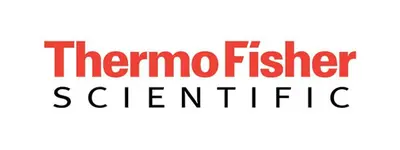- 3% Discount on online orders
- Fast Delivery Times
- DIN ISO 9001:2015 Certified
- Manufacturer Expertise
- Contact Us
Checkout using your account
Checkout as a new customer
Creating an account has many benefits:
- See order and shipping status
- Track order history
- Check out faster
Vials
In order to find the right vials and therefore the right closures for an application, there are a number of points to consider. On the one hand, the type of autosampler or the syringe of the autosampler is decisive. The wrong closures can quickly lead to a defect in the syringe. On the other hand, the sample is of course also decisive. There may be an incompatibility between the sample and the vial or septum. A distinction should also be made between short-term and long-term storage. Another point is the sensitivity of the sample to light. All these things should be taken into account in order to identify the appropriate vials and septa.
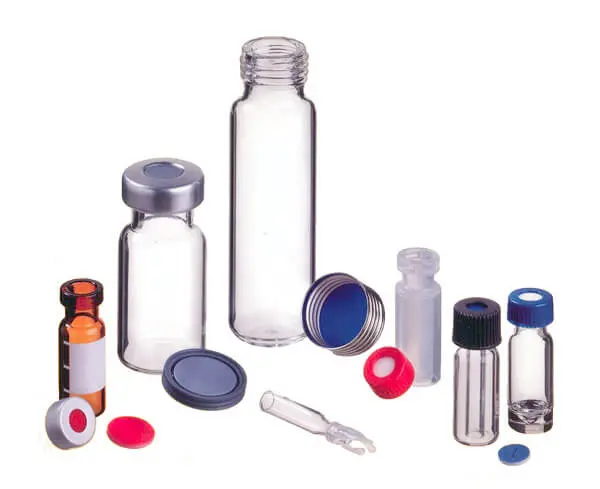
Manufacturer
Products
Technical Data
How do I choose the right vial?
In order to find the right vial for you, it is crucial to adequately cover all requirements resulting from the type of autosample and the properties of the sample. The following points should be considered when selecting a vial:
- Closures and caps
- Vial material
- Inserts
- Septa
- Special requirements and applications
There are various options available for each point, each of which has its own advantages and disadvantages. These are explained in more detail below.
1. Closures and caps
The first step is to select a type of closure. The requirements for tightness and pressure stability are crucial here. For volatile samples with high vapour pressure or applications in the field of headspace GC, these are particularly high and a robust closure is required. Vials can be sorted into three categories according to the type of closure: Screw top, crimp top and snap ring/cap. If caps and vials are purchased separately and not as a kit, it is essential to ensure that both have the same cap type and size and are compatible with each other.
Screw top
- Screw cap with short thread
- Can be easily closed and opened by hand
- High tightness (suitable for volatile compounds and longer storage times)
- Can be used for headspace GC
- Available for use with or without septum
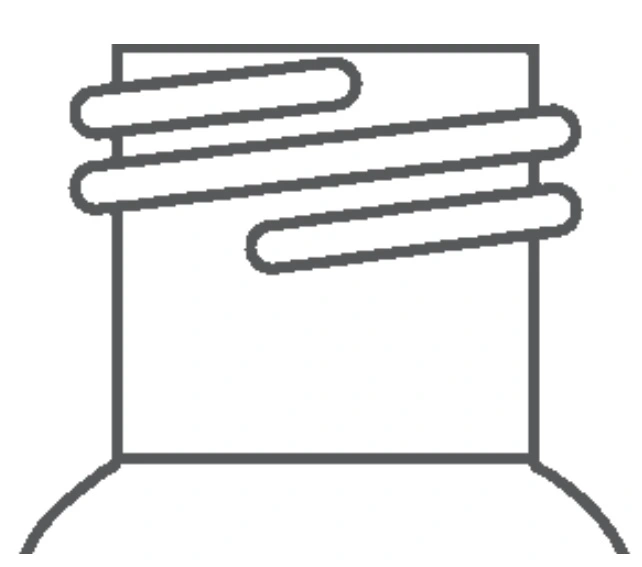
Crimp top
- Lid is crimped onto the rim of the container
- Special pliers required for sealing
- Very high tightness and robustness (standard for headspace GC)
- Vial is not resealable
- Use of a septum required
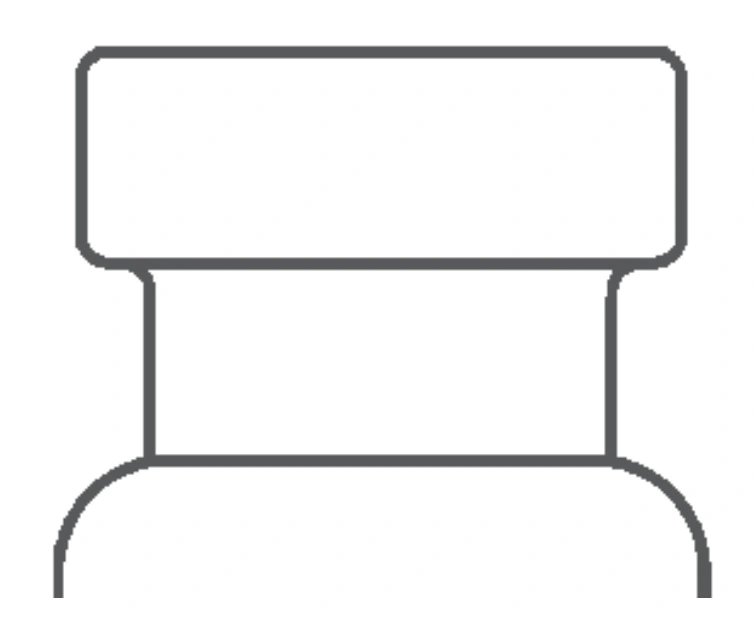
Snap ring / snap cap
- Classic snap fastener
- Very easy to open and close by hand
- Reclosable
- Comparatively poor seal (not suitable for volatile compounds)
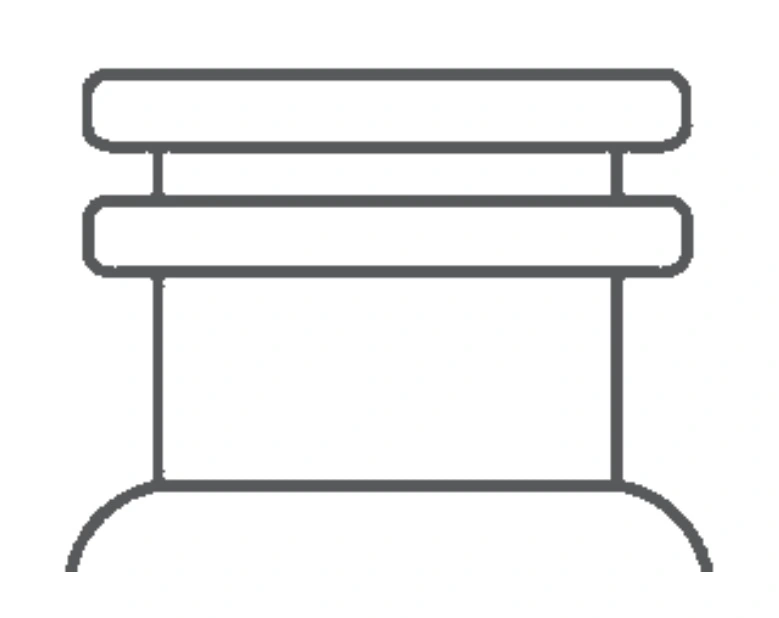
Picked a type of closure? Then click here to find matching caps.
2. Vial material
Once you have decided on the type of closure, the next step is to choose the material your vial should be made of. Various types of glass and plastic are available for this purpose. It is important that the vial is chemically inert to your sample, as otherwise the sample can be altered or the vial wall can get damaged.
Glass:
- Typically made of borosilicate glass (type I)
- High chemical resistance
- Good mechanical properties
- Suitable for most routine applications
Amber materials:
- For the protection of light-sensitive samples
- Easy handling
- Available for glass or plastic vials
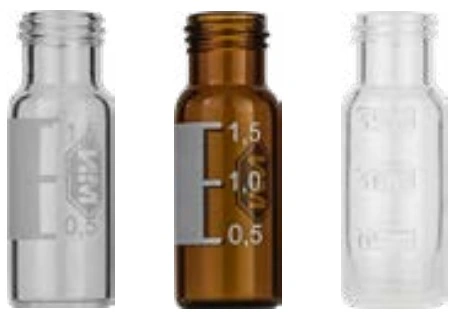
Silanised glass:
- Chemically treated glass with deactivated silanol surface
- Hydrophobic surface that prevents adsorption of polar analytes
- Interactions with water are suppressed, so no pH changes are caused by the vial
- Suitable applications: Proteins, phenols, amino acids, pH-sensitive analytes and aqueous samples
Plastic:
- Typically made from polypropylene (PP)
- Alternative to glass if not compatible with sample or application
- Hydrophobic surface (similar to silanised glass)
- Cost effective
- When used with organic solvents, consider the resistance of the material
- Typical applications: Heavy metal analysis, water analysis, proteins, AAS, CE, IC
3. Inserts
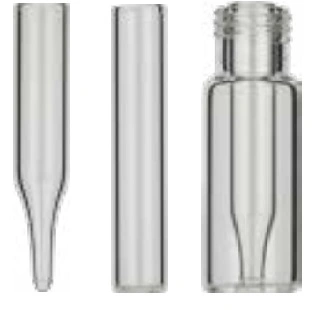
You can also purchase a matching insert for a vial. These are sold individually or directly in combination with a compatible vial. The use of inserts is optional, but can offer great advantages for some applications. Possible reasons for using an insert are:
- Your sample volume is very small (100 - 500 µl)
- You want to utilise the advantages of a conical bottom in a vial with a flat bottom
- You want to combine the advantages of different materials
If you have decided to use inserts, it is essential to check compatibility here too. The insert must fit exactly into the vial in order to prevent the sample from leaking and to ensure proper tightness. An insert may also be too short for the insertion depth of your autosampler.
For more information, please visit our shop page on inserts.
4 Septa
The selection of a suitable septum is particularly important for chromatographic applications. It is the penetration point for the needle of an autosampler or syringe and is therefore essential for sampling. The use of a septum can offer the following advantages:
- Sampling possible without opening the cap (particularly important for crimp tops)
- Vial remains tightly sealed during the entire sampling process
- Multi sampling possible (very frequent puncturing can, however, impair tightness)
When selecting a septum, it is crucial that the mechanical and chemical properties are compatible with your application. A septum must not be too hard or thick for the needle of your autosampler and the septum material must be chemically resistant to your sample.
Septa are available in combination with vial caps or individually. If you do not require a septum for your application, you can also use closed caps that omit the use of a septum.
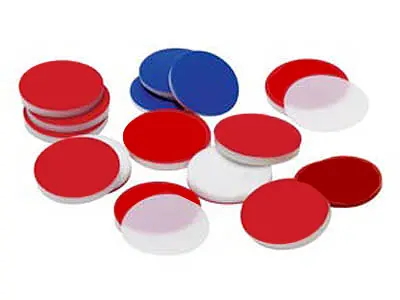
Here you can find more about septa. Please also visit our other pages on syringes and syringe accessories.
5. Special requirements and applications
For most applications, especially routine HPLC and GC applications, you are well equipped with a standard vial. However, there are also exceptions, which is why the most common special cases and the special equipment required for them are summarised here.
Headspace applications
Headspace GC is a special form of gas chromatography in which the vapours escaping from a solution are analysed. Here, some space (headspace) is left in the vial above the sample solution and the sample is heated to improve vapour emission.
Special headspace vials are available for this method to meet all special requirements:
- The vials are larger in order to have enough space above the sample
- To withstand the sometimes high vapour pressures, the walls are thicker and the material is of high quality
- Special crimp and screw tops with special caps are often used for optimum tightness
- Optionally, caps with pressure relief / pressure release can be used to prevent excessive overpressure in the vial
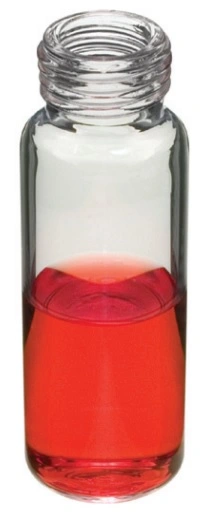
High temperature applications
Vials can also be used for applications at high temperatures, provided they are stable enough. Typically, plastic components are the limiting factor when it comes to temperature stability. However, plastic cannot be fully avoided, especially when using septa. A septum made of rubber can generally be used up to a maximum of 110 - 120 °C (depending on the type of rubber); for applications up to 200 °C, a silicone-based septum should be used.
PFAS analysis
In PFAS analysis, the blank value is often a major challenge as many devices and components can cause unwanted contamination. Vials are no exception here. PTFE, which is often used in septa, must be completely avoided and other plastic parts may also contain PFAS residues from production. It is recommended to use septa, caps and vials made of high-quality polypropylene or silicone that has been specially manufactured free of PFAS for this application.
Please also visit our page on PFAS.
Downloads
Brochures
-
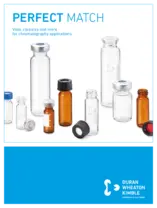 DWK Vials, Closures and more Brochure
DWK Vials, Closures and more Brochure
-
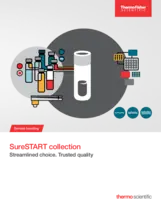 Thermo Surestart Vials Brochure
Thermo Surestart Vials Brochure
-
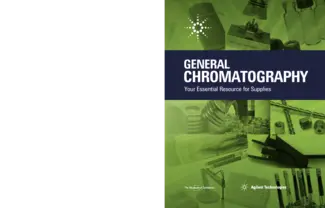 Agilent General Chromatography Parts and Supplies Catalogue
Agilent General Chromatography Parts and Supplies Catalogue
-
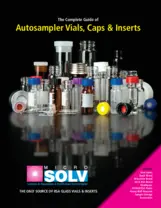 Microsolv Guide Autosampler Vials-Caps-Inserts Brochure
Microsolv Guide Autosampler Vials-Caps-Inserts Brochure
-
 Microsolv RSA-ProX Vials Brochure
Microsolv RSA-ProX Vials Brochure
-
 Microsolv AQ Brand Autosampler Vials, Caps and Inserts for PFAS Brochure
Microsolv AQ Brand Autosampler Vials, Caps and Inserts for PFAS Brochure
-
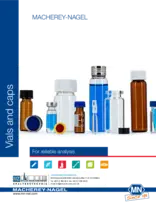 Macherey-Nagel Vials and Caps Brochure
Macherey-Nagel Vials and Caps Brochure
The right column for you - we will be happy to support you individually
Competent consultants are always at your side. Write a message to our consultants, we will get back to you and give you individual support.
You will find:
Write us a message and we will get back to you as soon as possible.
